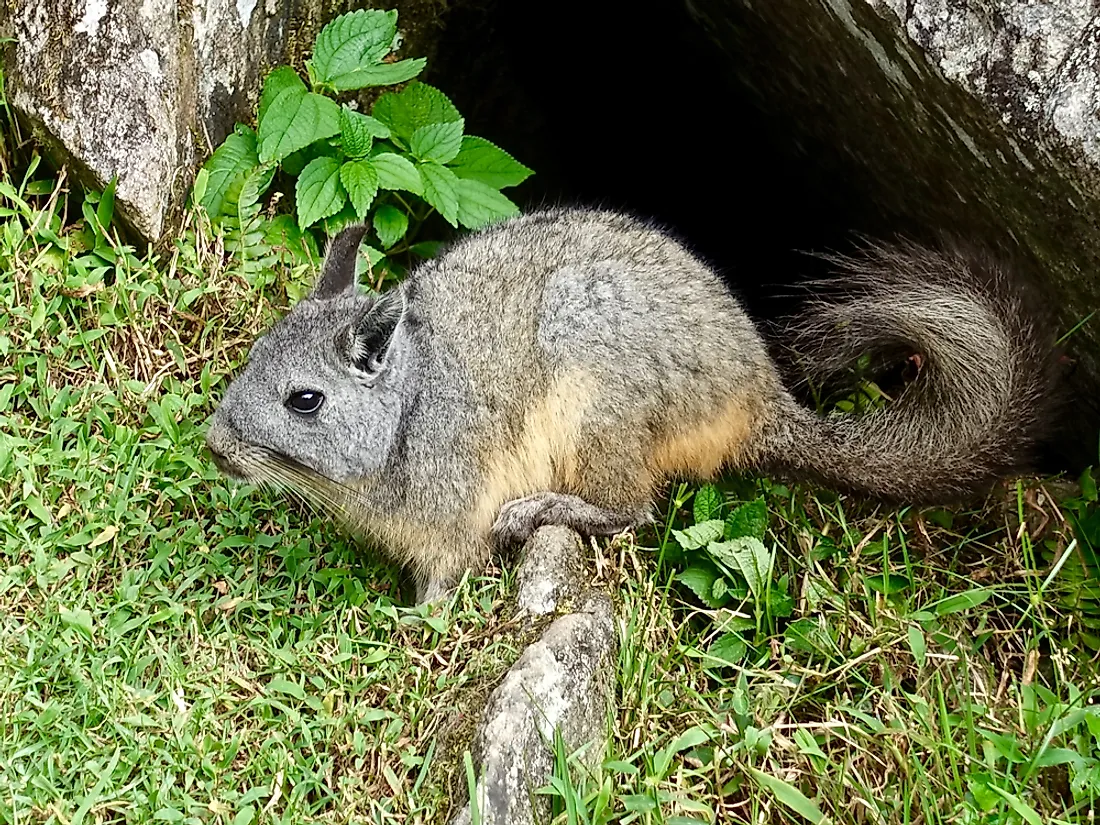Where Do Chinchillas Live In The Wild?

Chinchillas are small rodent-like animals that are native to the Andes Mountains of South America. The animals belong to the family Chinchillidae together with the closely related to viscachas. Among all land mammals, chinchillas have the densest fur. The name chinchilla originates from an Andes tribe of people known as the Chincha who used to wear the dense fur of the diminutive creatures.
History of Chinchillas
History has not been kind to these poor, nigh defenseless creatures. Records show that they have always been in demand among people due to their warm ultra-soft fur. Towards the end of the 19th century, the animals were almost extinct due to excessive hunting. In their native Peru and Bolivia, the animals may be extinct already. In Argentina, researchers failed to find a single specimen despite the fact that the animal is also native to the country. In Chile, where they are also native, there was a mistake when people thought they were extinct in 1953 only to find surviving species in the early 2000s in the Antofagasta Region.
Characteristics of Chinchillas
Aside from the earlier stated thick and ultra-soft fur, chinchillas had coats that were initially blue-gray in color. Recent breeding techniques have seen the emergence of chinchillas with furs colored in black, beige, white, gray, or varying combinations of these colors. The bodies are small and round with huge ears resembling those of a mouse. The tail is long while their legs are short. On average, they grow to lengths of 10 inches with the tail having lengths of up to 6 inches. Females are larger than males with the average adult having a mass of between 1 and 1.5 pounds and an average lifespan of 10 to 15 years in the wild. In captivity, the lifespan may be up to 20 years.
Behavior of Chinchillas
The animals like living in small groups that are known as herds. A heard can have anywhere between 14 and 100 members and lives in burrows or cracks in rocks. This number is ideal for social interactions as well as protection from predators. For defense, the animals rely on their teeth, releasing of fur when attacked, and spraying urine on predators. Breeding happens twice in a year with a gestation period of 111 days.
Diet of Chinchillas
Chinchillas are mostly vegetarians. The animals have been observed in the wild eating small insects, seeds, fruits, and plant leaves. Eating their own feces is also common practice for the animals in order to get some crucial nutrients. As pets, there are a variety of foods in pet stores that contain all the necessary nutrients. Water, supplements, and hay are also advisable for the healthy well-being of pet chinchillas.
Conservation of Chinchillas
Both surviving species of chinchillas, Chinchilla lanigera and Chinchilla chinchilla, are classified as endangered in the IUCN Red List of Threatened Species. In 2006, the long-tailed subspecies were described as “vulnerable” with the short-tailed ones termed as “critically endangered.” Both species were then classified as “critically endangered” in 2008 before their status reverted back to “endangered” in 2016 due to recovery efforts in some places.











